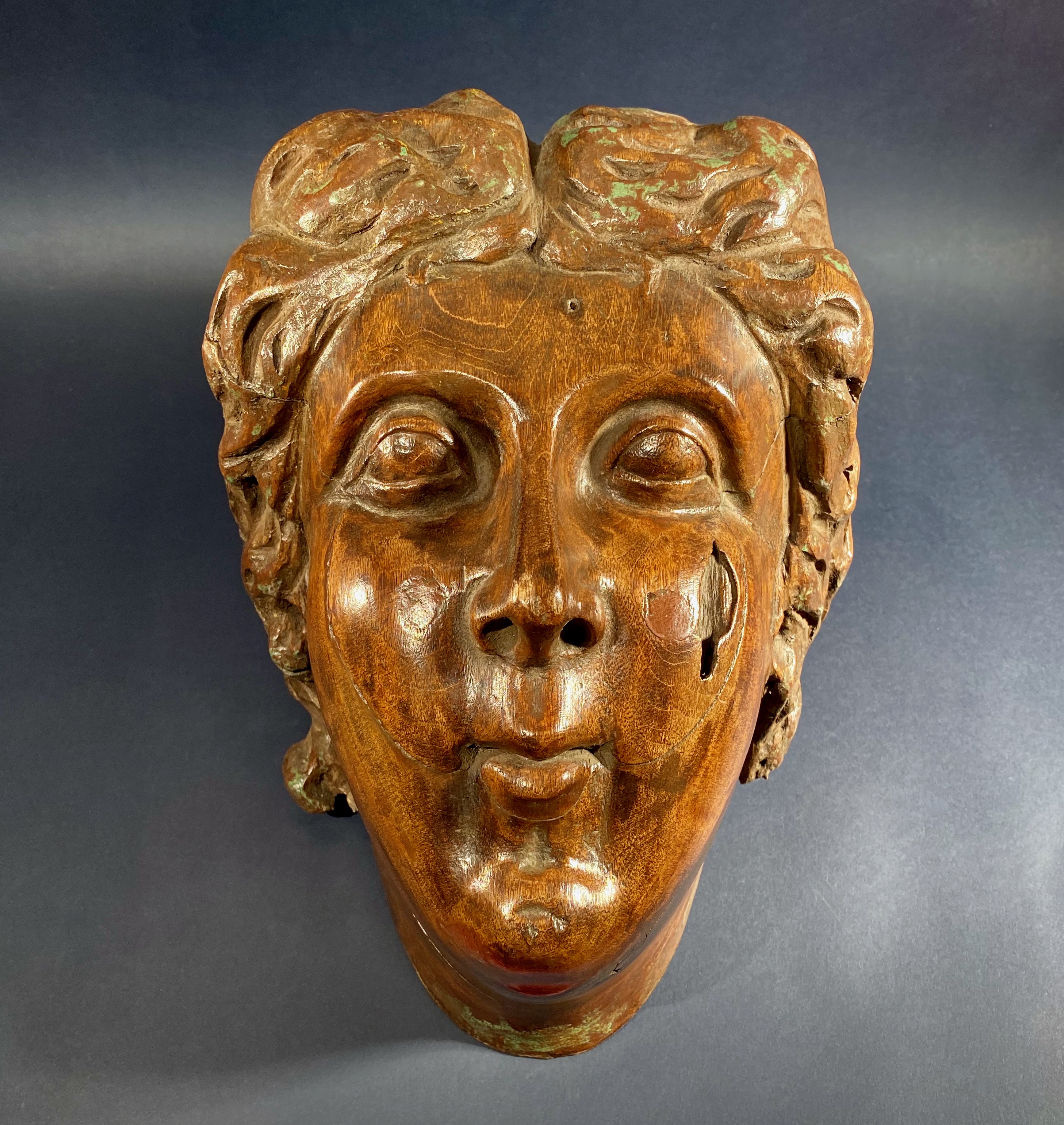

Title: Very large antique hand carved head of a woman
Shipping: $29.00
Artist: N/A
Period: 19th Century
History: Ancient Art
Origin: Southern Europe > Spain
Condition: Excellent
Item Date: N/A
Item ID: 395
Fabulous antique carved head of a Spanish woman not sure what this was carved for. Super unusual fantastic look. Very large it was laminated in four sections. I am not sure what kind of wood it is carved from but it looks like a beautiful hardwood of some sort. During the early 18th and 19th centuries in Spain, there was a tradition of hand-carving wooden faces that was part of the larger tradition of religious art. These carved wooden faces were often used as part of larger religious statues, such as those of the Virgin Mary, saints, and other religious figures. The art of hand-carving wooden faces in Spain had a long history, dating back to the Middle Ages, when wooden statues were used to decorate churches and cathedrals throughout the country. However, it was during the 18th and 19th centuries that this art form reached its peak. Artisans and craftsmen who specialized in carving wooden faces would often work in teams, with each member of the team specializing in a particular aspect of the carving process. The process would usually start with a sketch or design, which would then be transferred onto the wooden block. The block would then be roughed out and the basic shape of the face would be carved. Once the basic shape was established, the details would be added, such as the eyes, nose, and mouth. The artisans would use a variety of tools, such as chisels, gouges, and knives, to create the intricate details of the face. The finished product would be sanded and polished to give it a smooth, finished look. These carved wooden faces were often painted and adorned with other decorative elements, such as gold leaf, to make them even more striking. They were used in religious processions and displayed in churches throughout Spain. The tradition of hand-carving wooden faces in Spain continued into the 20th century, but with the advent of mass production and modern materials, the art form began to decline. However, there are still artisans and craftsmen in Spain who continue to carry on this tradition, creating beautiful works of art that are cherished by collectors and art enthusiasts around the world.
Wood carving is a technique that has been used for centuries in Europe. It is believed that the art of wood carving originated in ancient civilizations such as Egypt, Greece, and Rome, and was brought to Europe by the Romans. The Romans used wood carving for a variety of purposes, including architecture, furniture, and decorative objects. During the Middle Ages, wood carving became an important art form in Europe, particularly in the religious context. Churches and cathedrals were adorned with wooden sculptures of saints, angels, and other religious figures, which were often painted and gilded to make them more ornate and impressive. As the Renaissance period began in the 14th century, wood carving became even more important as artists began to explore new forms and techniques. The Renaissance period saw a surge in wood carving as artists used the medium to create intricate and detailed sculptures, altarpieces, and decorative objects. During the 18th and 19th centuries, wood carving in Europe evolved to include new materials and techniques. The introduction of power tools and machinery allowed wood carvers to create larger and more complex pieces than ever before. The art form also began to include elements of realism and naturalism, with carvers striving to create lifelike representations of their subjects. Today, wood carving in Europe is still practiced by artisans and craftsmen who use traditional techniques as well as modern tools and materials. It continues to be an important art form in many cultures, and is valued for its beauty, intricacy, and historical significance.